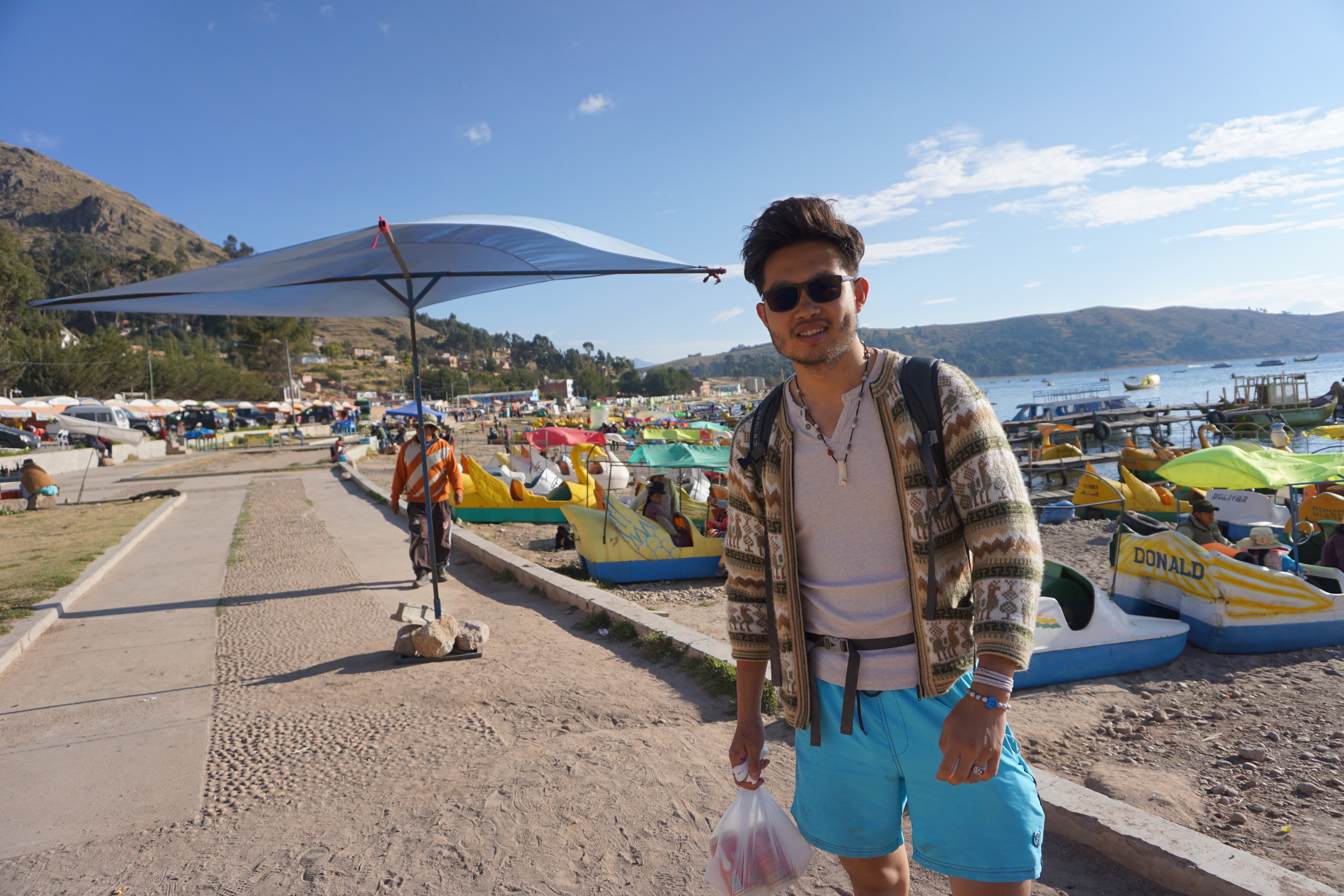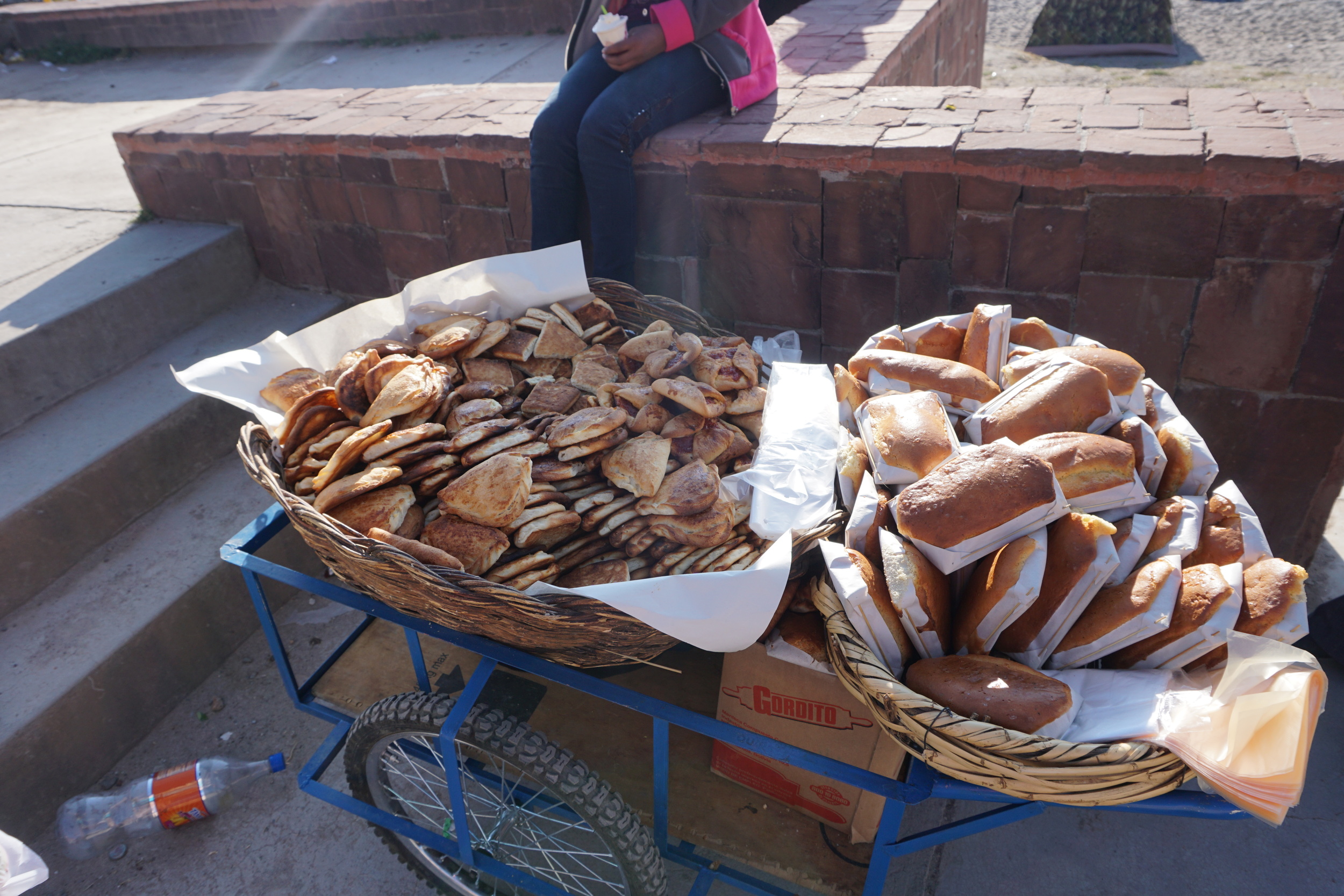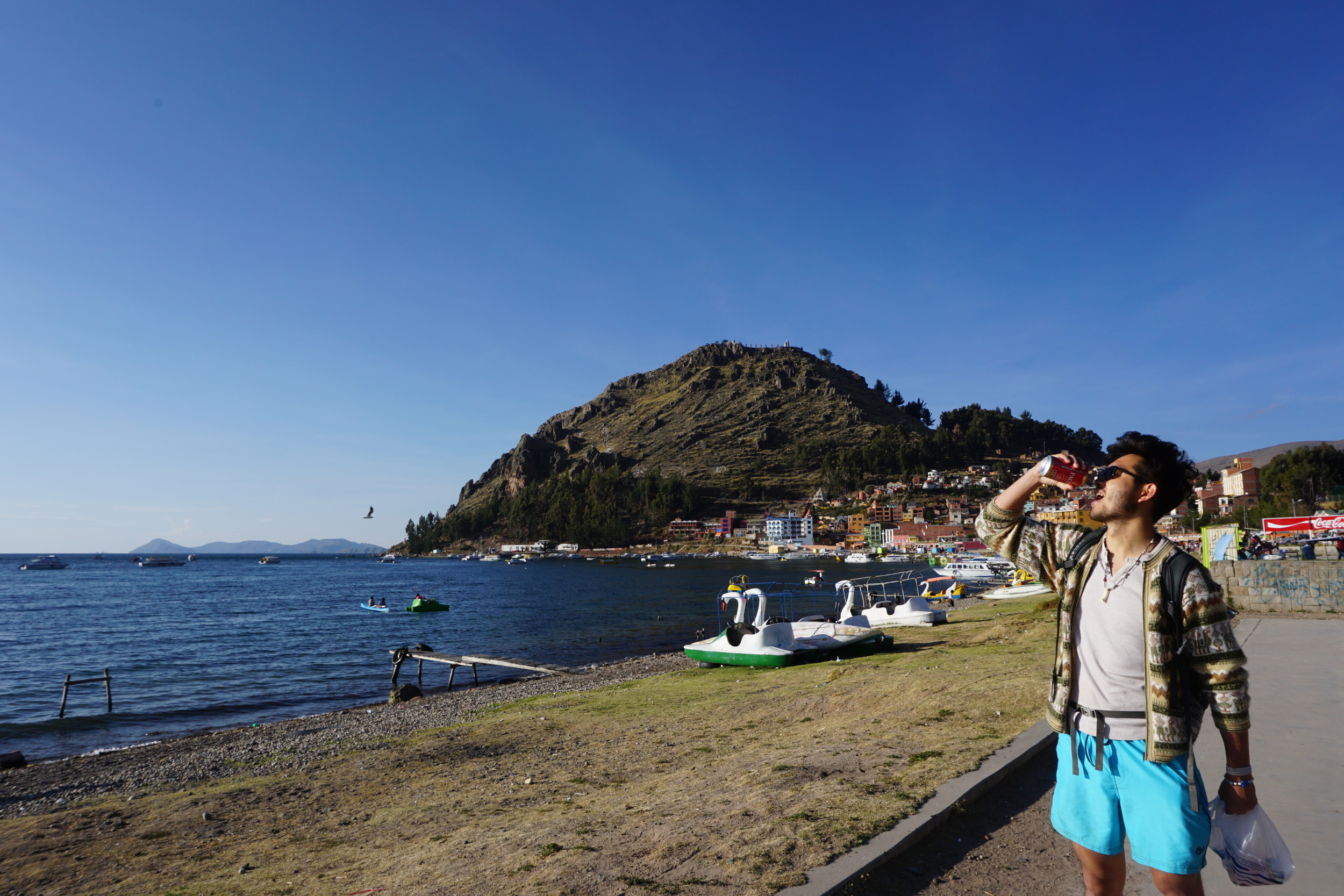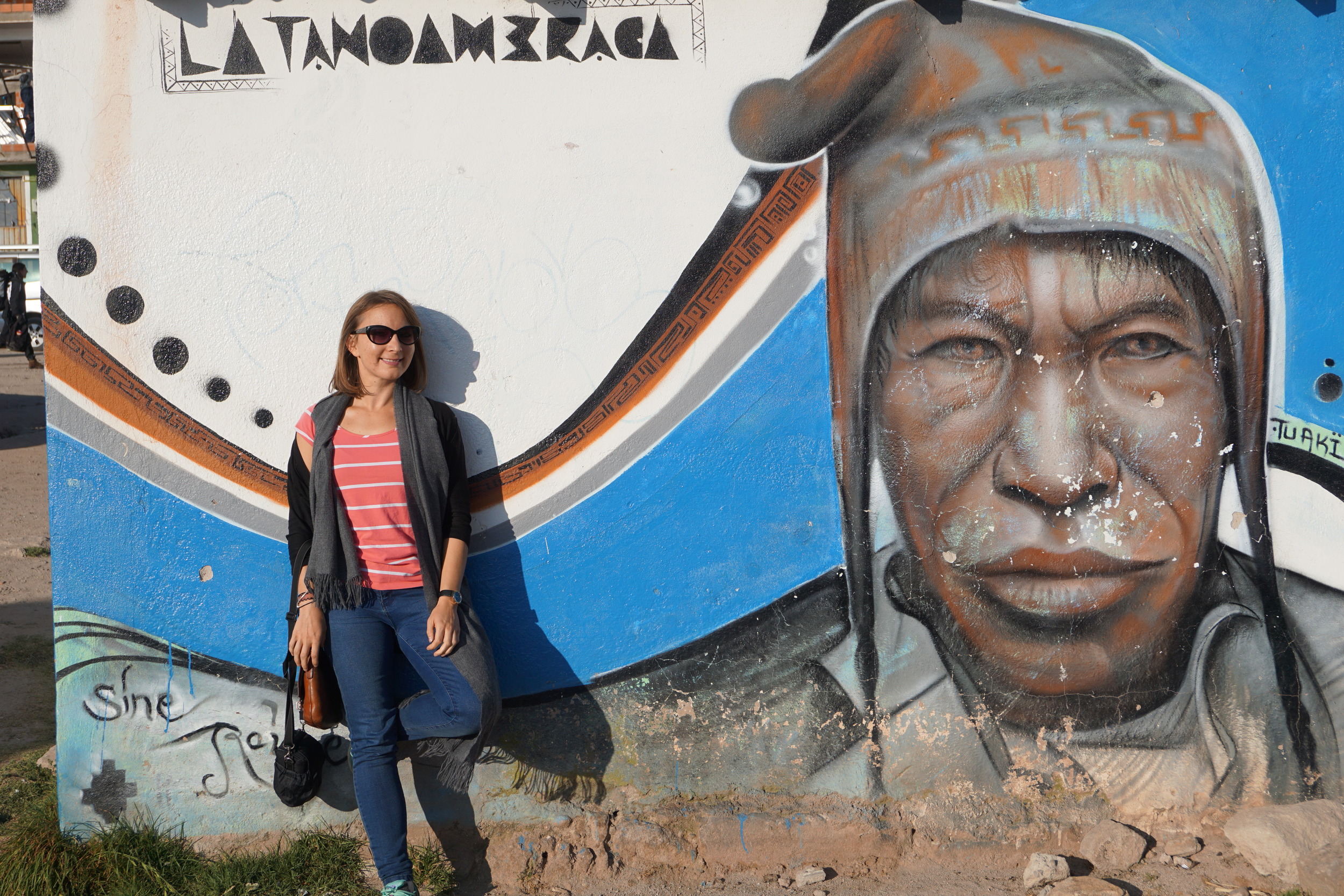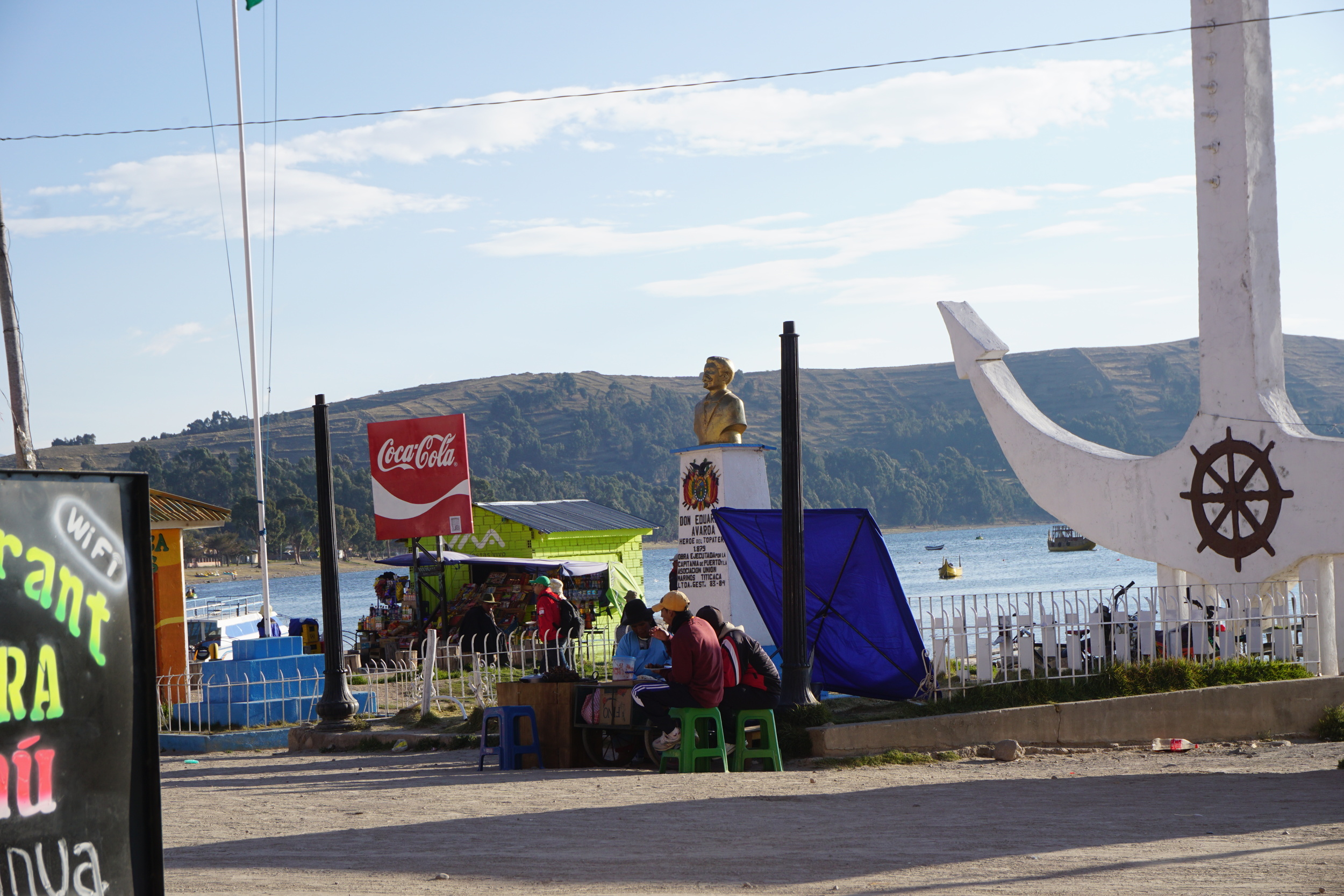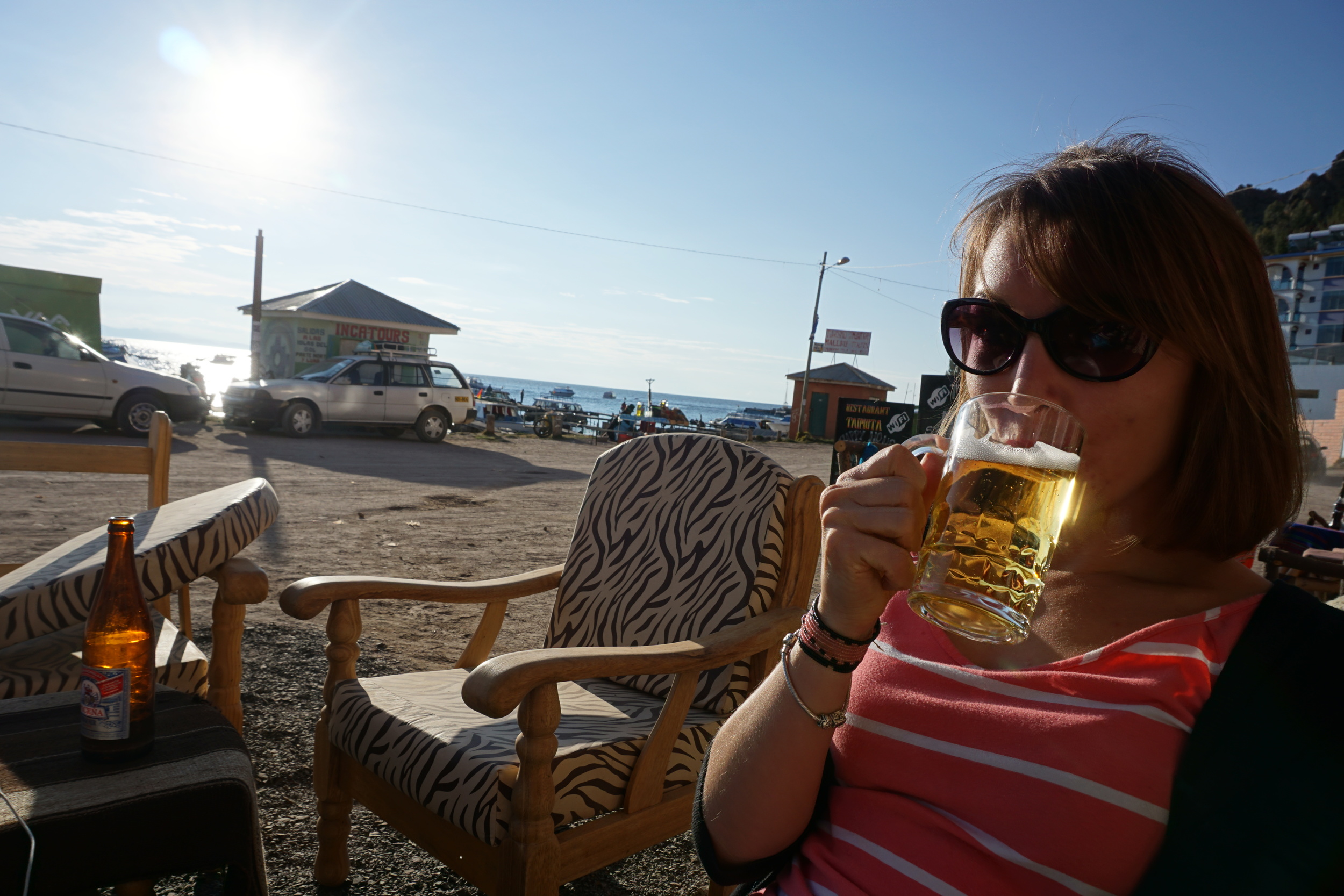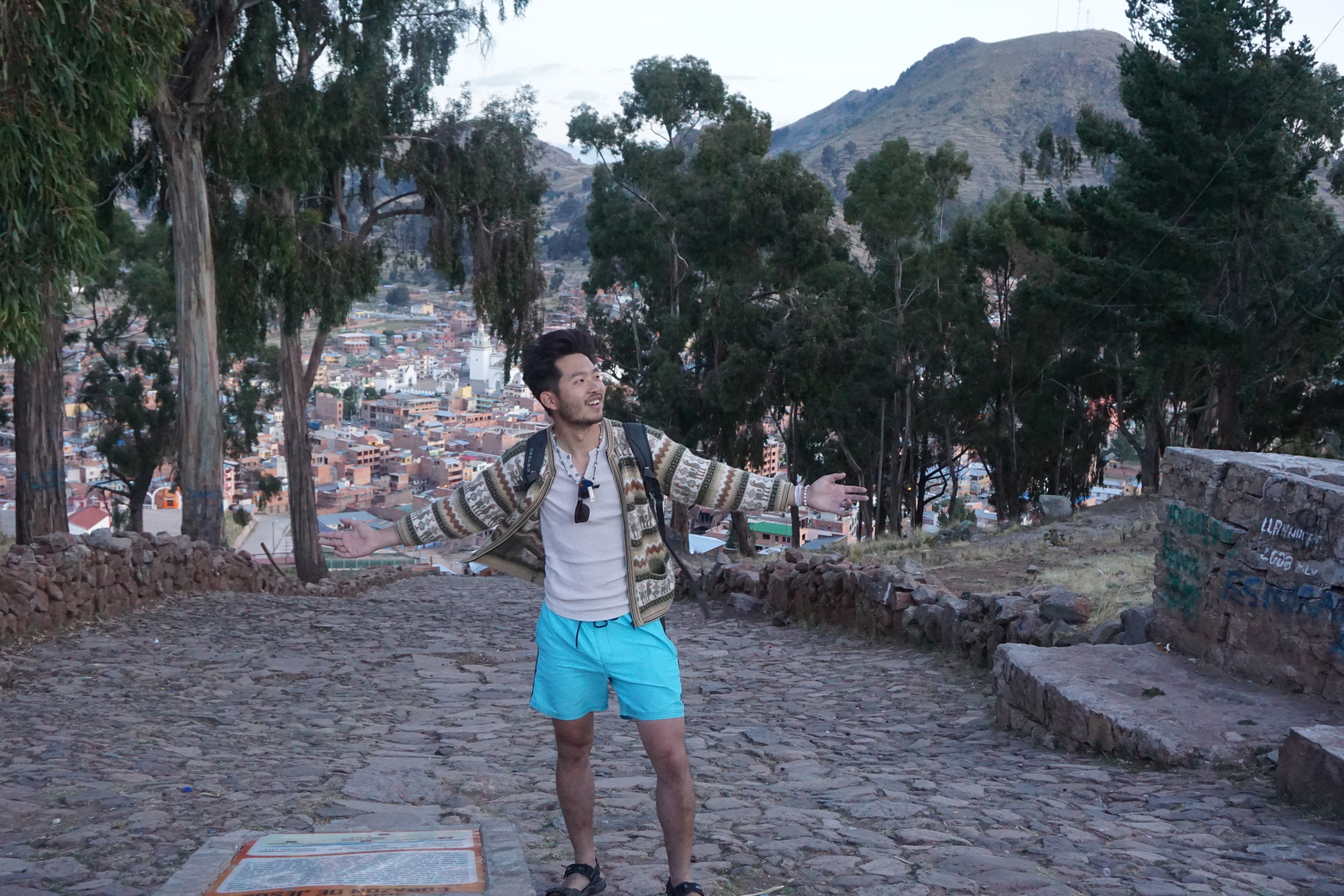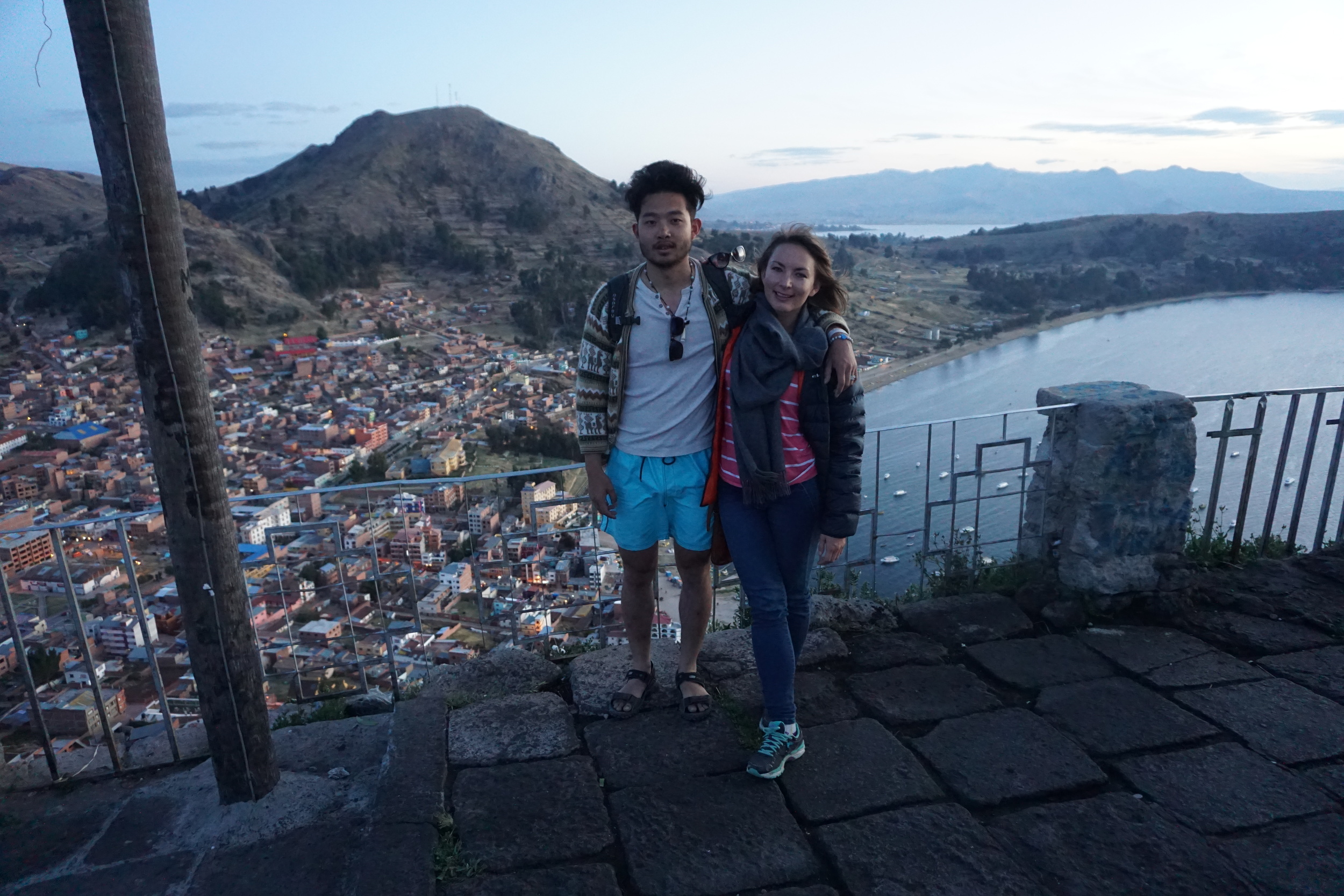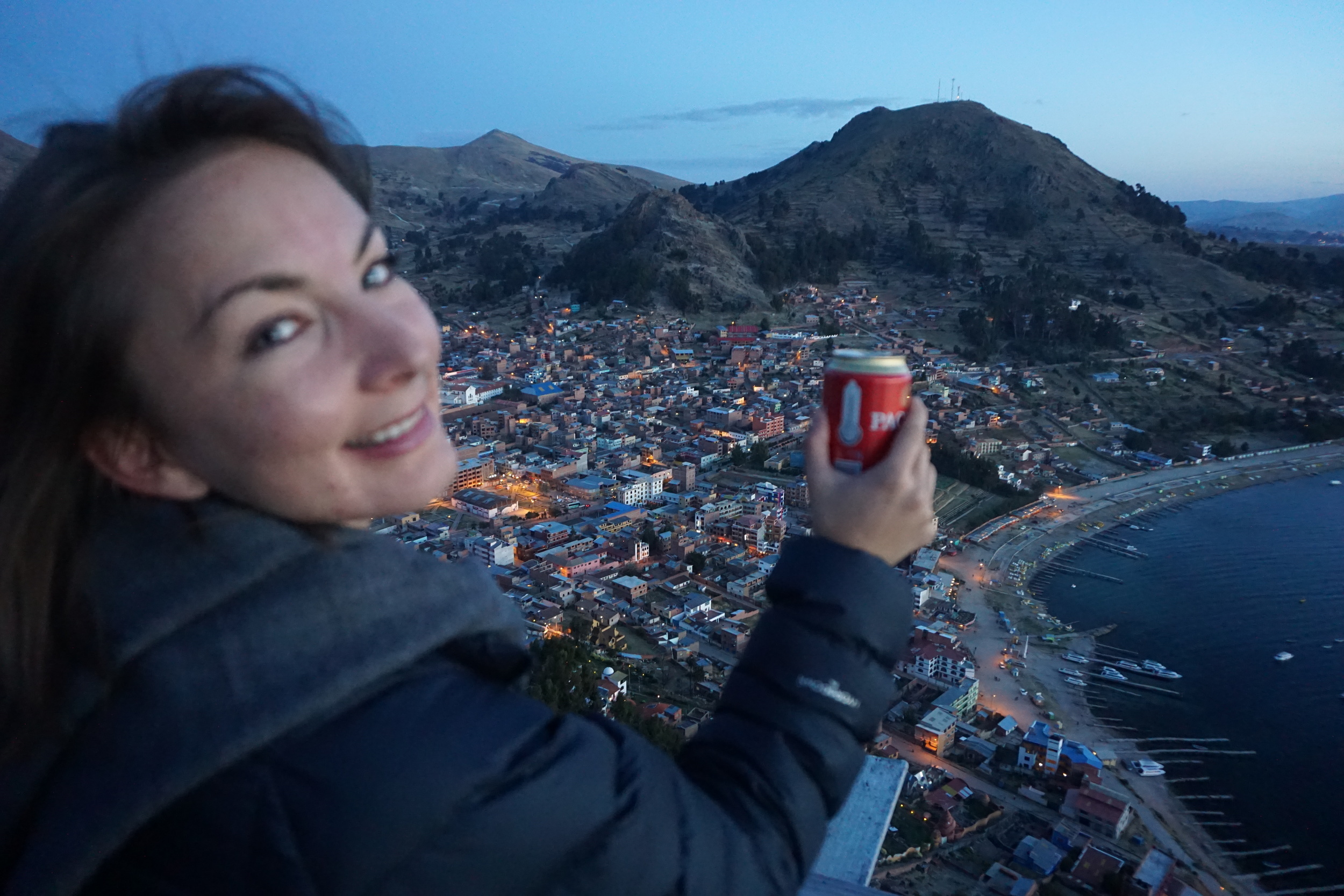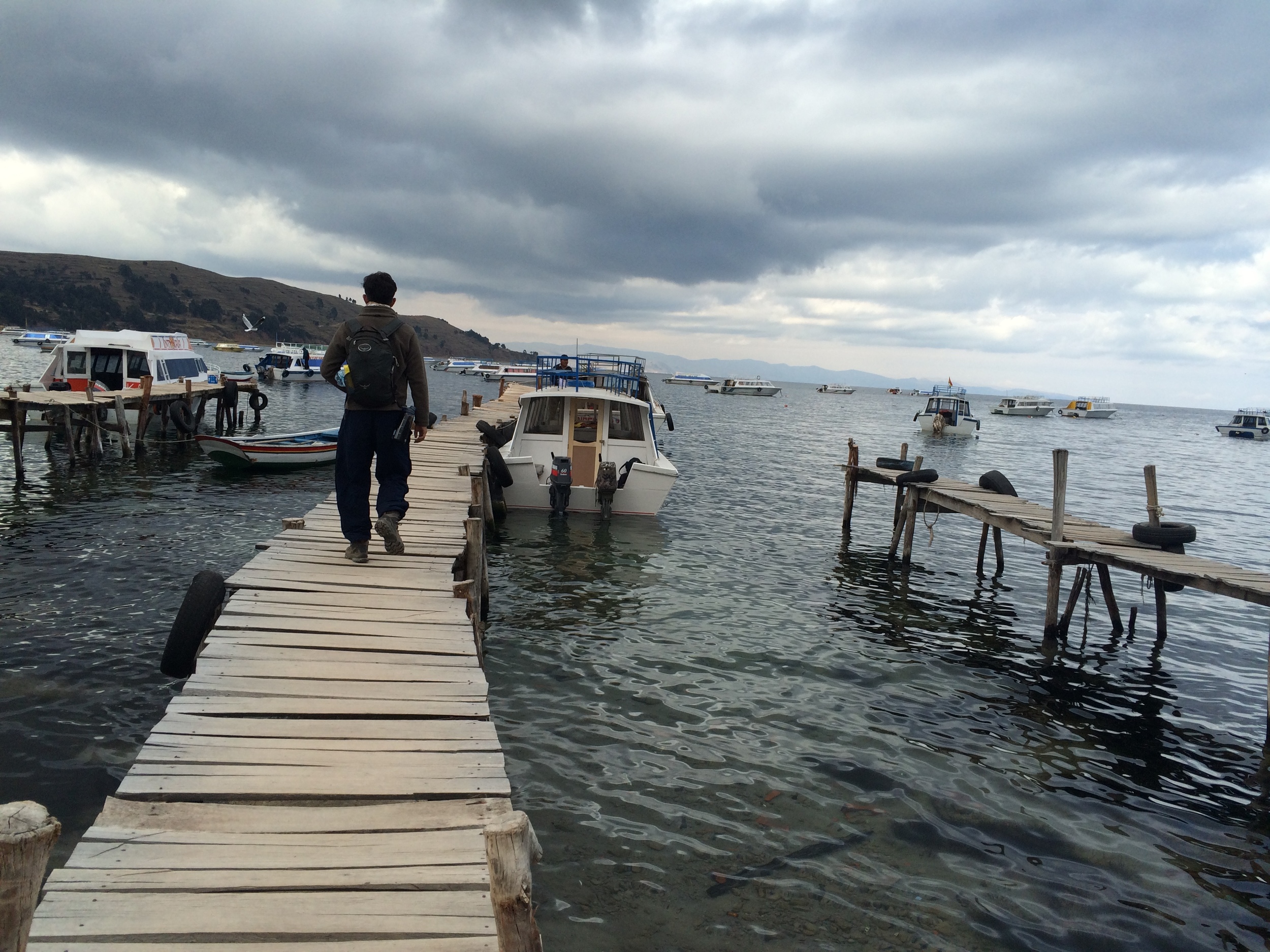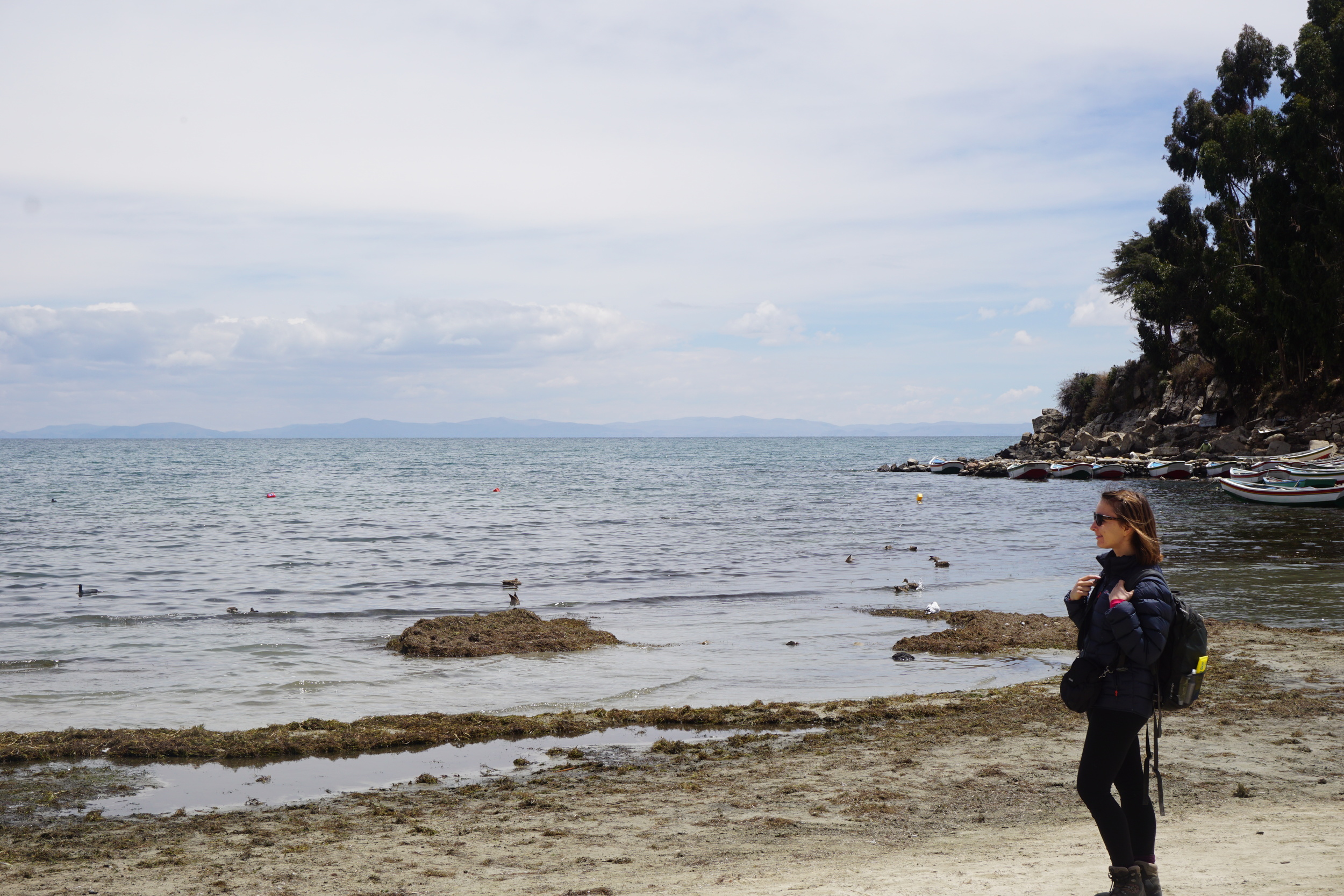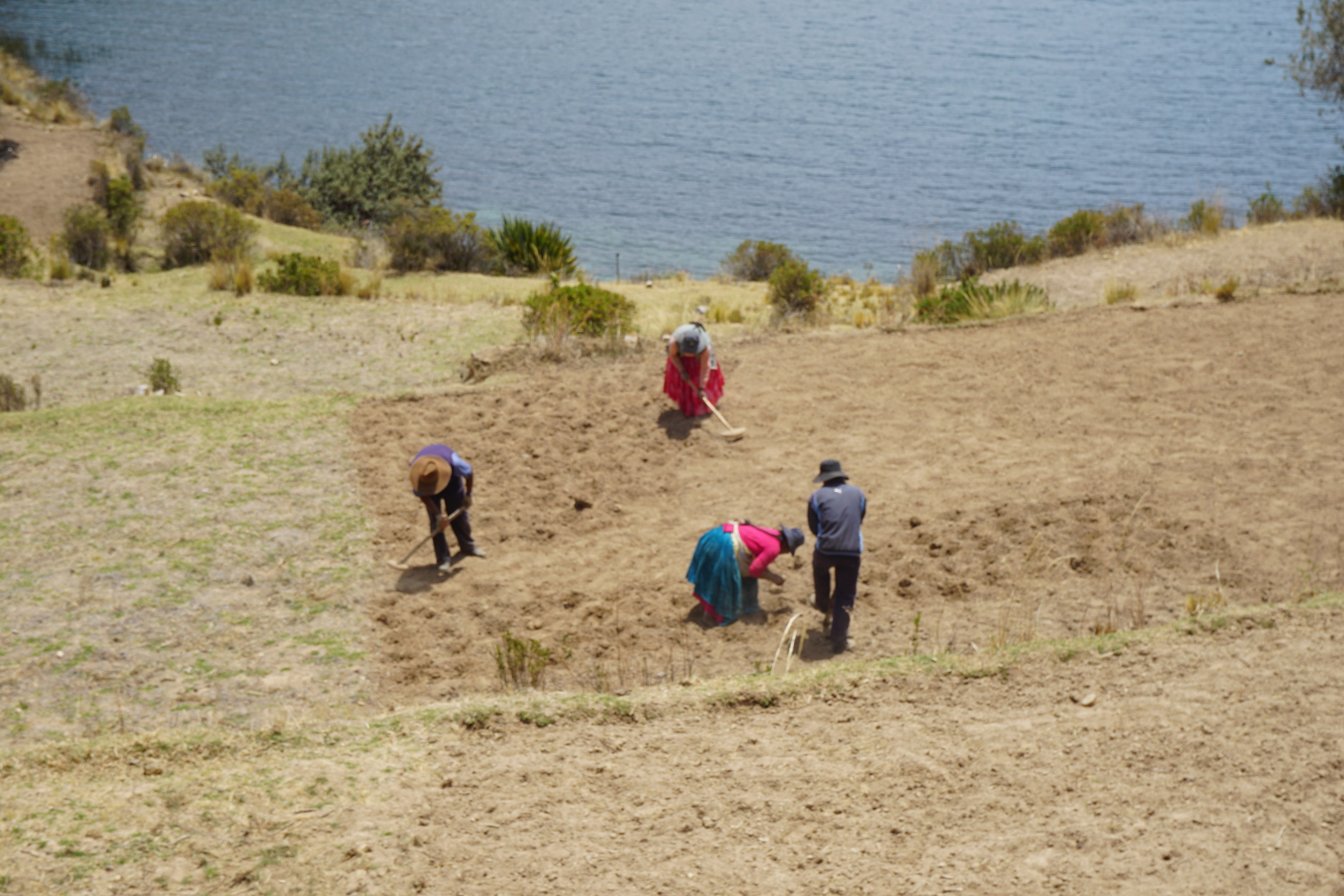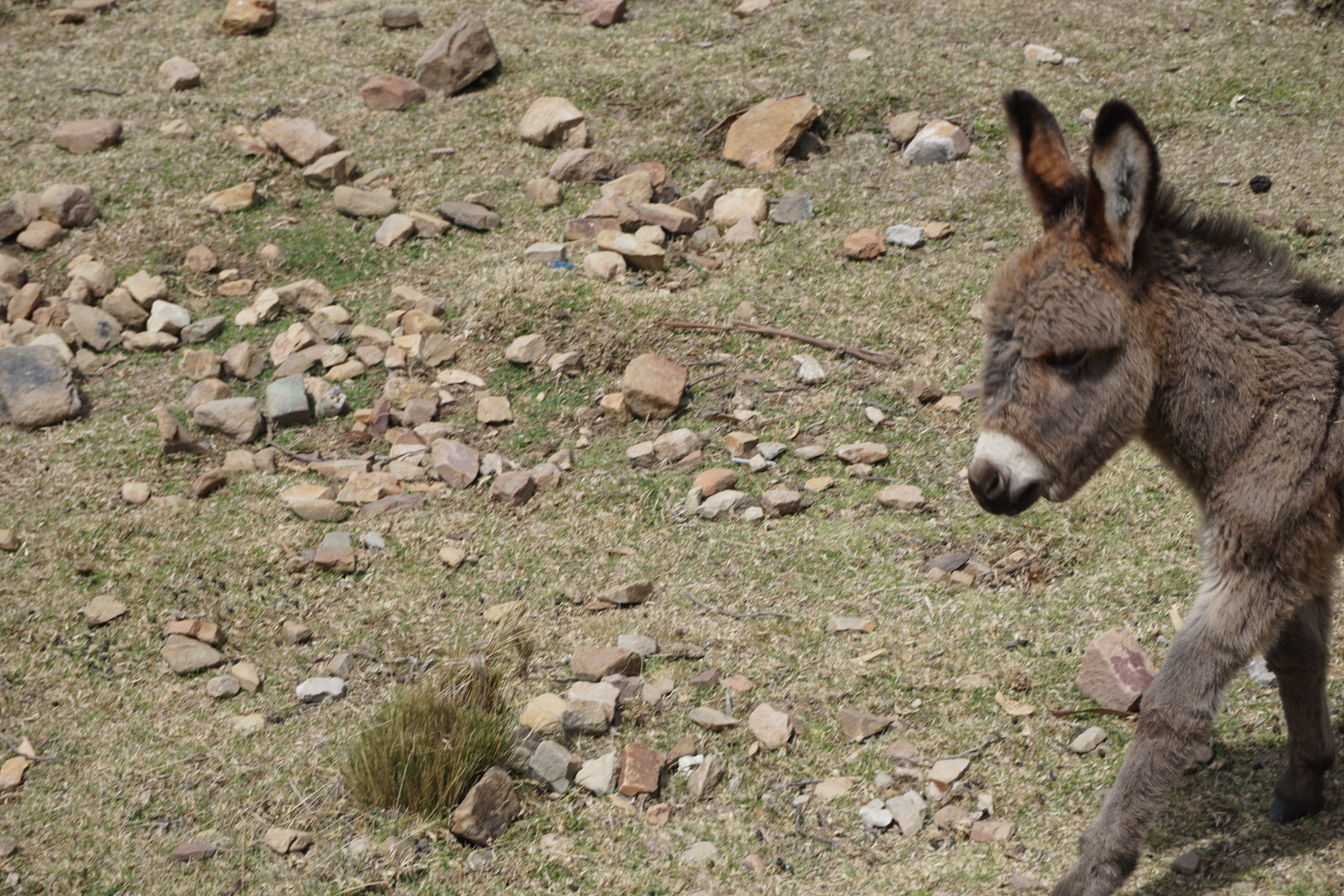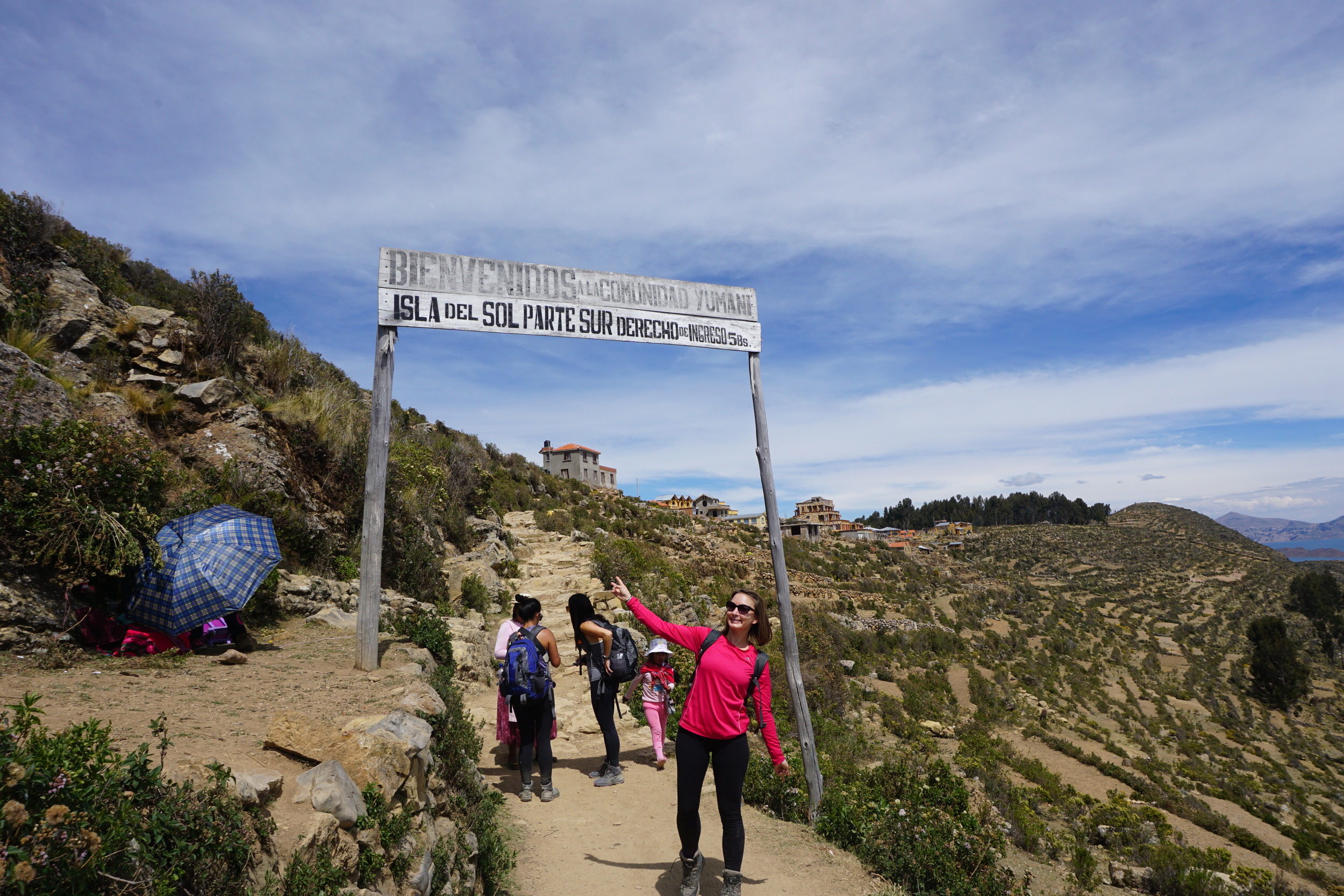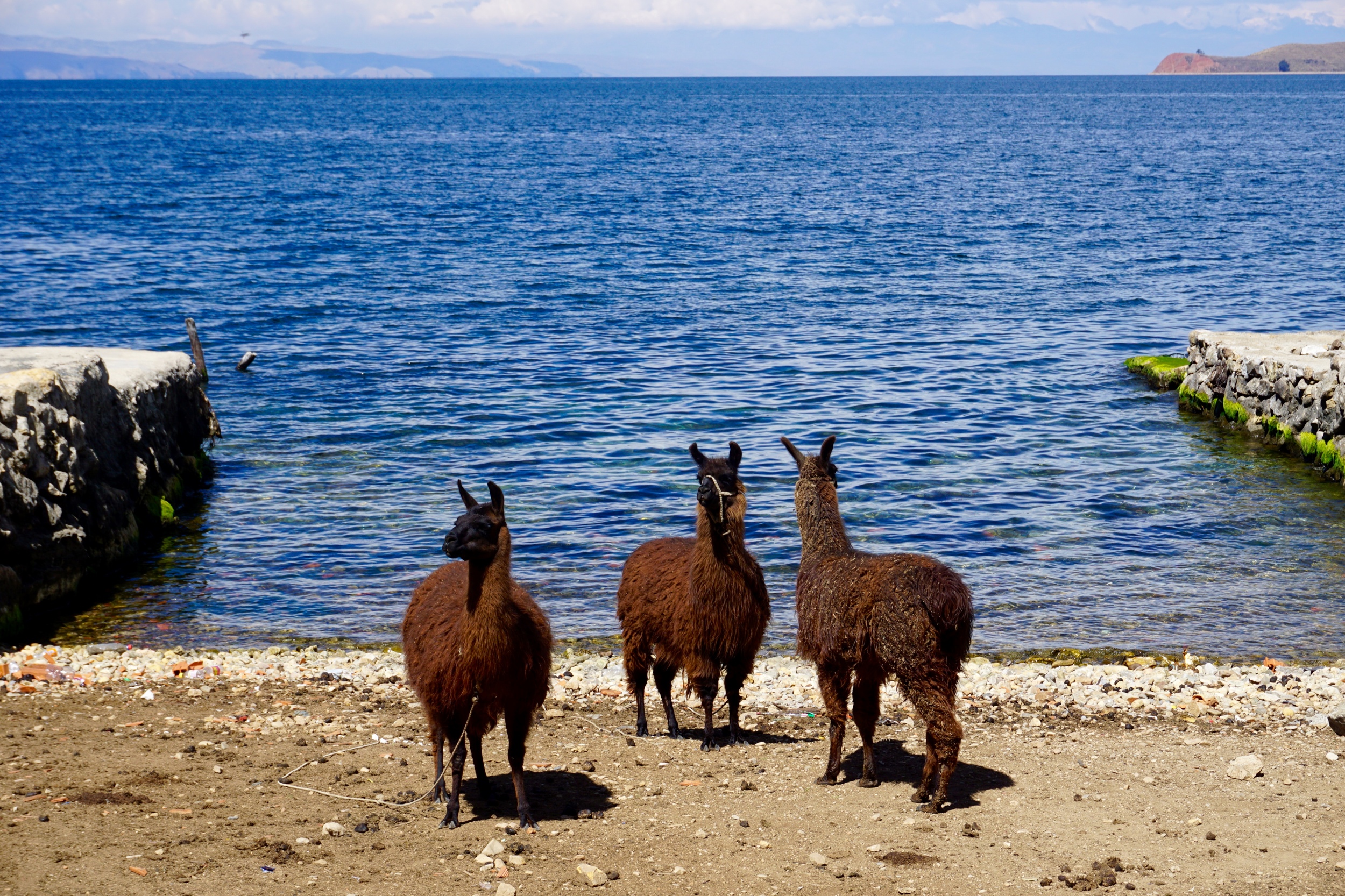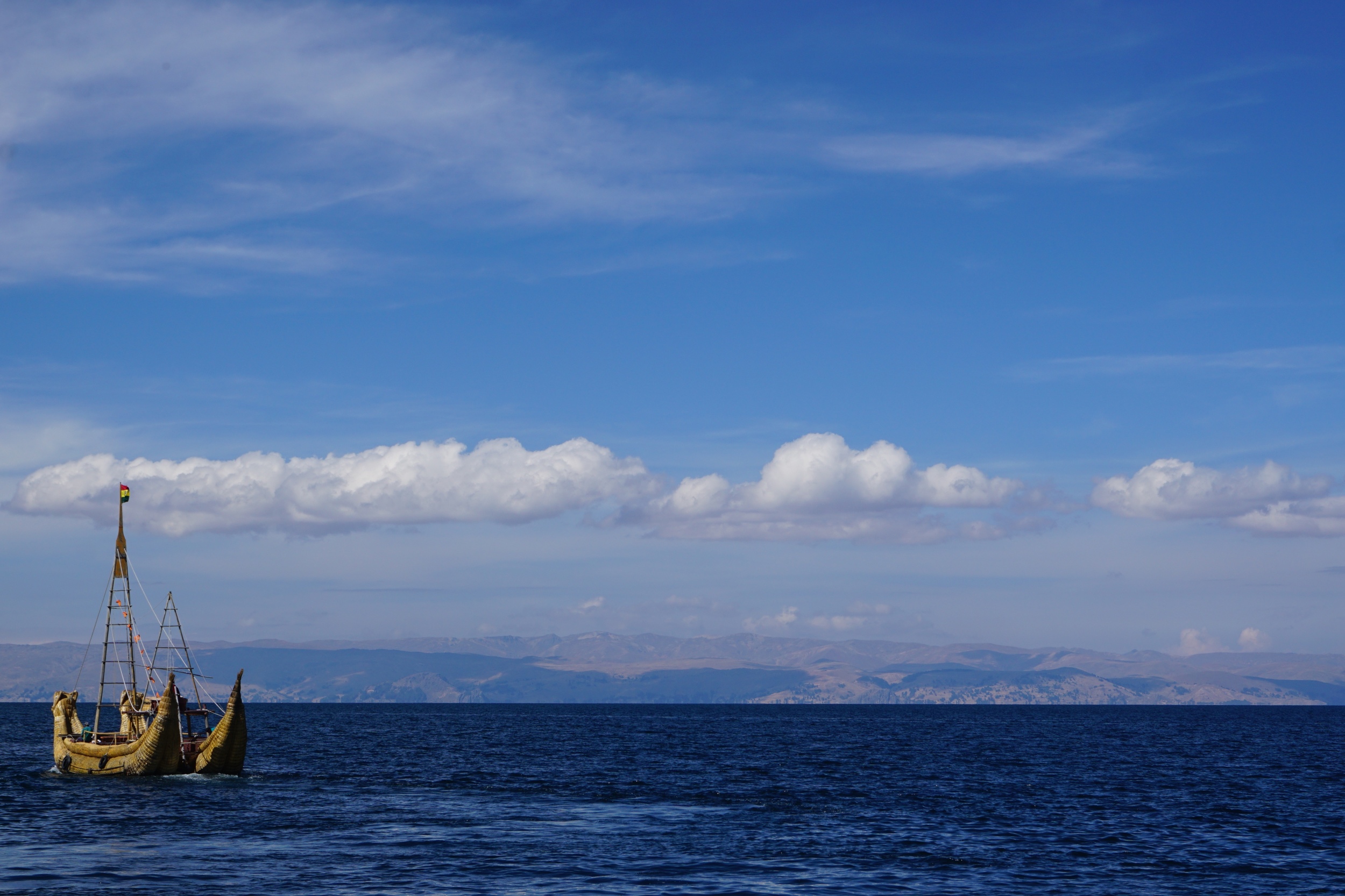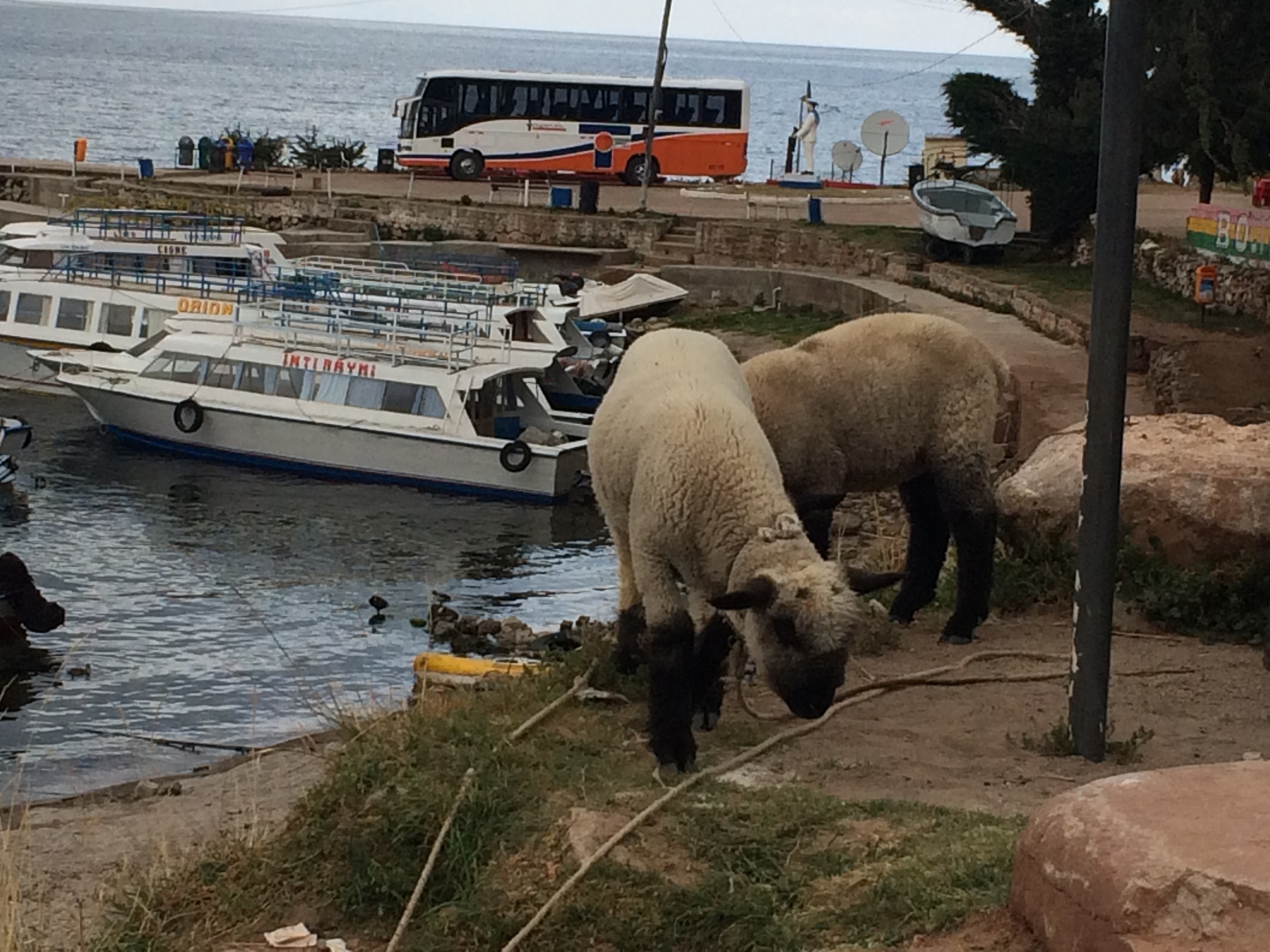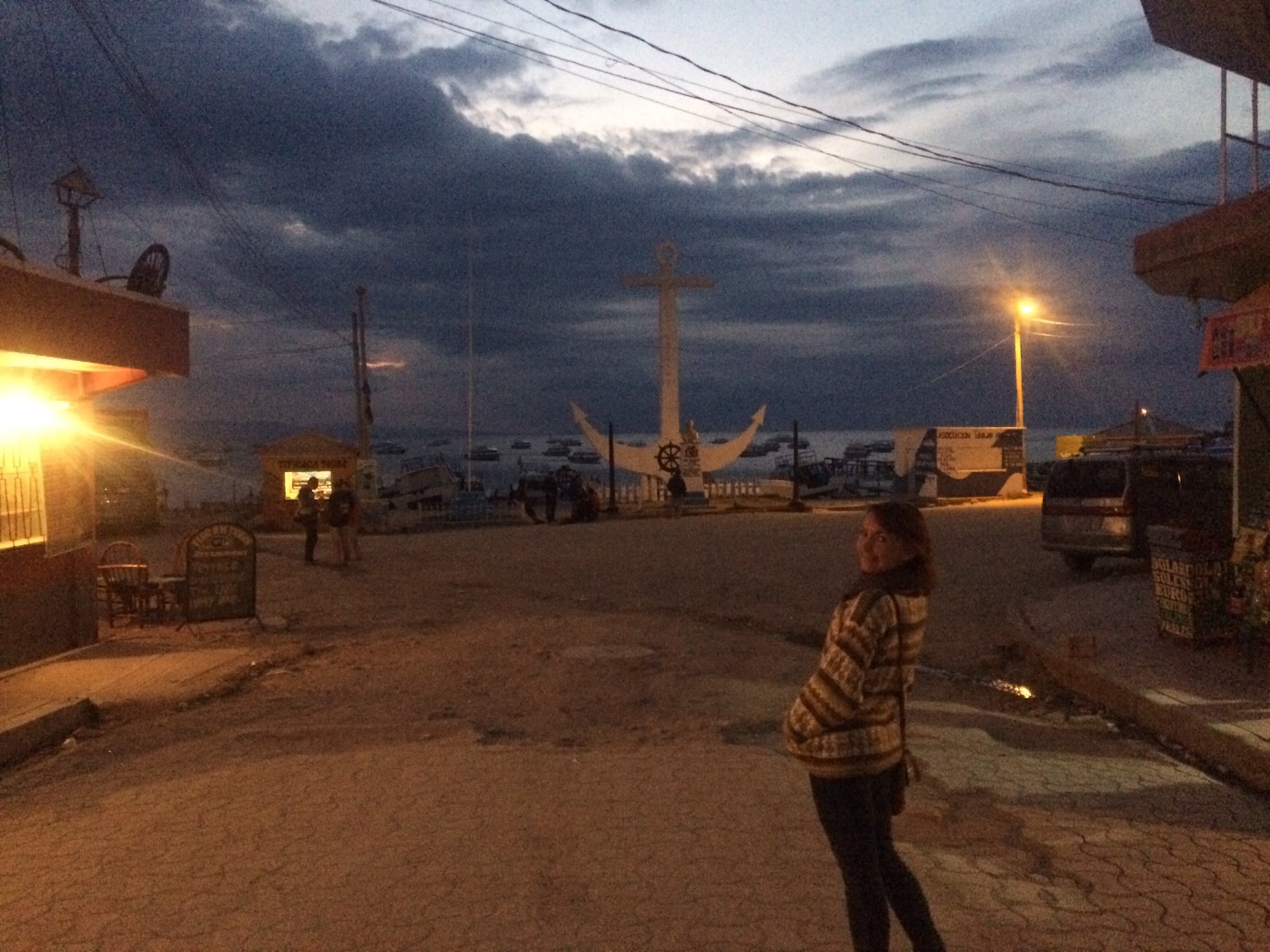October 15th-17th, 2015
Richard and I climbed onto the night bus leaving from Cusco on October 14th, after an eventful day of wandering around the city. Richard just came back from the jungle sporting jungle-themed jewelry, with tales of boredom and armed with a bow and arrow. The night bus from Cusco to Lake Titicaca was smooth sailing, with the exception of some older ladies talking up a storm at 3 am, preventing a then grumpy Richard from falling asleep (poor guy). Meanwhile, I was snuggled up against the window dreaming away. We had to transfer buses in Puno, so we had a quick coffee and tea and made it to the Bolivian Border.
Richard, a Cholita, and Welcome to Bolivia sign
The border crossing was smooth, and we ended up in Copacabana in the early afternoon. Lago Tititcaca is known as the highest navigable lake in the world, nested in the Andes at 3,812 m asl. Lago Titicaca is a Unesco World Heritage site, and is one of the world’s only known ‘ancient’ lakes being dated at around 1 million years old. It is known by the Incas as where civilization started, and is therefore a sacred place (whc.unesco.org). The culture and food is noteworthy, with trout from the lake served at every restaurant and Cholitas with their colourful petticoats and precariously balanced top hats selling their wares along the beach.
Beers and beaches
Swan boats
The beach was a snapshot from a 1950s beach scene, with carnivalesque swan boats lining the shores waiting to be pedalled around the lake. Richard and I explored the waterfront, sampled the food they were selling (icecream and bread). In the evening, we raced up Cerro Calvaio trying to beat the setting sun. We were embarrassingly out of breath, overcome by the elevation. A local lady we crossed paths with on the way up the mountain even told me to relax a little because she was scared that I was going to have a heart attack. Luckily no heart attacks were had, and we made it up the mountain being outdone by the sun, but we were still treated to vivid blue scenes of twinkling lights. We were among the very few left at the top, so we settled behind some closed stalls and shared a celebratory beer and enjoyed the views.
Twinkling lights of Copacabana
The next day we woke up early to catch the boat to bring us to Isla del Sol, the largest island in Lago Titicaca. According to mythology, Isla Del Sol is where the Incan Sun God and first people emerged from. The air was thin and the sun was intense. We were dropped off at the north end of the island, and took long and winding path for 4 hours to the southern side.
Isla del Sol
The geology was incredible, with uplifted sedimentary rocks and layers steeply dipping. It was a gorgeous hike on the quiet island, with lamas, fluffy donkeys, and sheep dotting the way. We met two lovely Canadian girls on the boat ride up, Vivian and Nicole, and hiked the island with them. By the end of the day, Richard was incredibly sunburned, and we were all tired and hungry and ready to go back to the mainland.
Richard and I enjoying the views
The next day Richard and I rented a swan boat and explored the lake. It was totally worth doing, even though they were the most ridiculous boats I have ever seen. We had one last dinner of trout, and we went to the street where I was going to catch my bus. We gave each other a huge hug goodbye, and I left with the two Canadian girls to continue onto my Bolivian adventures, and Richard left to do a quick tour of Arequipa before going home to London. It’s always so sad to say goodbye to travel friends who live in other parts of the world, but I was so happy to be able to share my first memories of Bolivia with such an awesome guy.
Me on the swan boat, paddling around like a fool.




